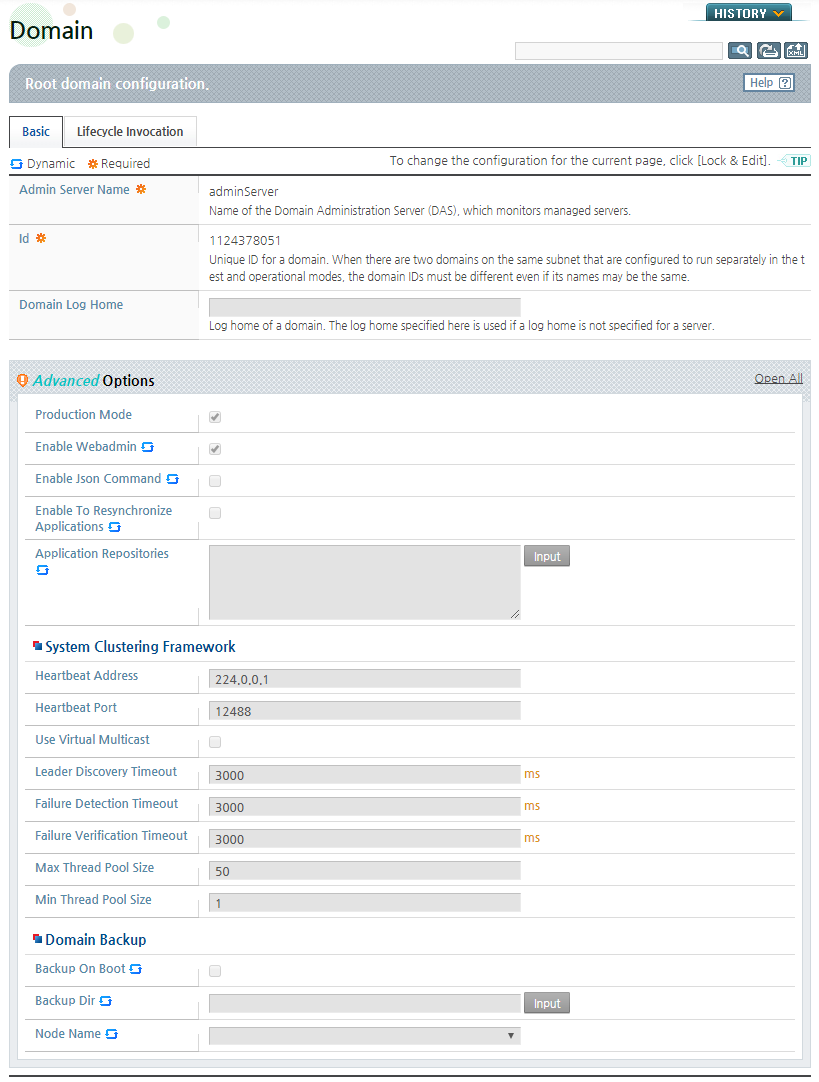Table of Contents
Abnormal termination of a server that causes service issues can occur for many reasons. These issues can be minimized by creating clusters. This chapter describes the issues that may occur if a server terminates abnormally and how to handle them.
Even if DAS terminates abnormally, managed servers (MS) can still run their services. If DAS stops abnormally due to a hardware error, MSs on the faulty machine are likely to fail as well. However, abnormal termination of DAS itself does not affect the services of MSs in the domain.
If DAS terminates abnormally, managing the configuration and adding and modifying applications cannot be performed until DAS restarts. After DAS restarts and notifies the MSs, the MSs are managed by DAS again.
Without being connected to DAS, an MS cannot start using the configuration in DAS. Instead, it must use the file in its local cache if it was able to connect to DAS at least once to obtain the configuration file. It will use the copy in the local cache and then synchronize with DAS when DAS starts. If the MS and DAS share the domain directory because they are on the same machine, the MS can use the configuration in DAS even if DAS is not running.
Even if DAS terminates abnormally, the services can still run but some functions cannot be used. DAS should be restarted as soon as possible, but there are situations where DAS cannot restart due to such problems as a hardware failure.
To prepare for this, DAS settings and applications should be backed up. DAS can start on another machine by copying previously backed up DAS files to that machine.
The following are the methods for backing up DAS settings and applications.
- Automatically backing up DAS settings and applications whenever DAS starts
- Specifying to back up DAS settings and applications using the pack-domain command
When automatic backup is specified using backup configuration in WebAdmin, backup files will be automatically copied to local or remote node. Also, the pack-domain command is used to create a backup file when necessary. The created file should be managed by the user.
Automatically backing up DAS settings and applications whenever DAS starts
DAS settings and applications are automatically backed up whenever DAS is started. Domain backup configuration can be specified in WebAdmin or jeusadmin.
-
Using WebAdmin
Domain backup configurations can be specified in the Domain page. Relevant items include an option to use domain backups, and the directories and nodes in which backups will be stored.
If Node Name is specified, Backup DIr indicates the directory of that node. If not specified, Backup Dir will be a local directory. If the files cannot be moved to the specified node, they will be located in domains home.
-
Using the console tool
Automatic backup can be configured in the domain backup settings using jeusadmin.
The set-domain-backup command can be used to create the DAS backup file whenever DAS starts.
[DAS]domain1.adminServer>set-domain-backup -backupOnBoot true Successfully performed the MODIFY operation for Domain Backup Policy. Check the results using "set-domain-backup"By default, the backup file is created in the directory where pack-domain command is executed. The backup file can be decompressed on a different machine using the unpack-domain command.
-
pack-domain
Use the pack-domain commandto back up the settings and applications of DAS.
offline>pack-domain domain1 Packing the domain [domain1] configuration completed successfully at the path [JEUS_HOME/domains/domain1_packed.zip]. -
unpack-domain
Use the unpack-domain command to decompress the backup files. Users can change DAS information such as IP, Port, and Node when running the unpack-domain command.
offline>unpack-domain domain1 The Domain Administration Server listener address is already set to [192.168.34.55]. Do you want to change it? (y/n): y Enter the Domain Administration Server base listener address: 192.168.34.56 The Domain Administration Server listener port is already set to [9736]. Do you want to change it? (y/n): n The Domain Administration Server nodename is already set to [node1]. Do you want to change it? (y/n): y Enter the Domain Administration Server nodename: node2 The nodemanager of DAS machine listener address is already set to [192.168.34.56]. Do you want to change it? (y/n): n The nodemanager of DAS machine listener port is already set to [7730]. Do you want to change it? (y/n): n Unpacking the domain [domain1] configuration completed successfully.
Once DAS starts with the recovered settings, MSs that were in the INDEPENDENT mode synchronize their settings and applications with DAS. Afterwards, they leave the INDEPENDENT mode and are managed by DAS again.
Note
Refer to JEUS Reference Book. "4.2.4.31. pack-domain", JEUS Reference Book. "4.2.4.34. unpack-domain", and JEUS Reference Book. "4.2.4.30. set-domain-backup" for detailed information about the pack-domain, unpack-domain, and set-domain commands respectively.
-
Since Managed Servers run services regardless of the presence of DAS, the services are not affected when DAS terminates abnormally.
MSs have a local cache that stores settings and applications, which are synchronized when a server starts and when changes are made. If an MS is not connected to DAS when it starts, it uses the local cache to start in the INDEPENDENT mode.
When this happens, the MS is not controlled by DAS and DAS cannot monitor the MS. This can occur when DAS terminates abnormally, when the DAS address is incorrectly configured, or when a network error occurs.
After DAS restarts and notifies MS, the MS leaves the INDEPENDENT mode and is managed by DAS.
Managed servers in a domain can detect the abnormal termination of another server because they exchange state information through multicast. If the server is configured to automatically restart, DAS will automatically restart the server.
Note
When the SSH Node Manager is used, the option to restart a server is determined by the jeus.server.autorestart setting. If using the Java Node Manager, refer to "JEUS Node Manager Guide" for detailed information
